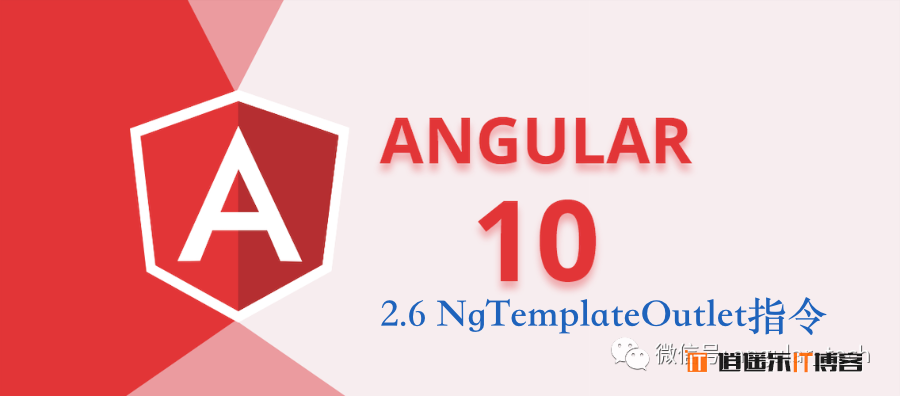
dialog组件,其中有一个功能点我们是没有实现的,那就是不能传入自定义组件内容。这一节,我们了解下NgTemplateOutlet结构指令需求分析:
- 创建一个子组件,并且有默认内容
- 父组件能够传入自定义内容
- 父组件能够访问子组件内部变量
ngTemplateOutlet
ngTemplateOutlet是一个结构型指令,能够将一个提前备好的 TemplateRef 插入到页面指定位置。
创建tpl-outlet组件:
ng g c components/tpl-outlet -s
引用组件:
<!-- app.component.html --> <app-tpl-outlet></app-tpl-outlet>
修改组件:
<!-- tpl-outlet.component.html -->
<div class="outlet">
<h2>NgTemplateOutlet</h2>
<div class="content">
<!-- 使用ngTemplateOutlet绑定模板 -->
<ng-container [ngTemplateOutlet]="defaultTpl"></ng-container>
</div>
</div>
<ng-template #defaultTpl>
<p>组件默认内容</p>
</ng-template>
页面表现:

想要组件能够引用外部传入的内容,首先应该定义一个输入属性来接收:
// tpl-outlet.component.ts
import { Component, Input, OnInit, TemplateRef } from '@angular/core';
...
export class TplOutletComponent implements OnInit {
// 定义一个叫render的输入属性,并且接收TemplateRef类型的值
@Input() render: TemplateRef<any>;
//...
}
修改模板,接收变量:
<!-- tpl-outlet.component.html -->
<div class="outlet">
<h2>NgTemplateOutlet</h2>
<div class="content">
<!-- 渲染内容为render的值或者默认内容 -->
<ng-container [ngTemplateOutlet]="render || render"></ng-container>
</div>
</div>
<ng-template #defaultTpl>
<p>组件默认内容</p>
</ng-template>
父组件传入自定义内容:
<!-- app.component.html --> <app-tpl-outlet [render]="outTpl"></app-tpl-outlet> <ng-template #outTpl> <p>外部传入模板内容</p> </ng-template>
页面表现:

ngTemplateOutletContext
ngTemplateOutletContext是一个对象,该对象的key可在模板中使用let语句进行绑定。可以通过设置ngTemplateOutletContext来给EmbeddedViewRef(也就是我们这儿的<ng-container>)附加一个上下文对象。
组件定义变量:
// tpl-outlet.component.ts
...
export class TplOutletComponent implements OnInit {
// 随便定义的一个对象
// $implicit是一个可以被默认识别的key值
ctx = {$implicit: 'default', value: 'context value'}
//...
}
模板绑定ngTemplateOutletContext:
<!-- tpl-outlet.component.html -->
<div class="outlet">
<h2>NgTemplateOutlet</h2>
<div class="content">
<ng-container [ngTemplateOutlet]="render || render" [ngTemplateOutletContext]="ctx"></ng-container>
</div>
</div>
...
父组件使用:
<!-- app.component.html -->
<app-tpl-outlet [render]="outTpl"></app-tpl-outlet>
<ng-template #outTpl let-key let-val="value">
<p>外部传入模板内容 --- 组件内部传过来的变量默认值:{{key}}, value:{{val}}</p>
</ng-template>
页面表现:

因为ctx.$implicit是内部默认识别的一个值,所以在let的时候不用赋值
同时,在子组件自己的模板上也一样能够访问内部变量:
<ng-template #defaultTpl let-key let-val="value">
<p>组件默认内容 --- 默认值:{{key}},value:{{val}}</p>
</ng-template>
简写
既然是个结构型指令,那引用变量方式也可以这样:
<ng-container *ngTemplateOutlet="render || defaultTpl; context: ctx"></ng-container>
并且,将指令使用在<ng-template>上也是可以的:
<ng-template *ngTemplateOutlet="render || defaultTpl; context: ctx"></ng-template>
总结
- ngTemplateOutlet 是一个结构型指令,接收一个
TemplateRef类型的值; - 使用
ngTemplateOutletContext能够传递组件内部变量,简写直接使用context
本文转载自:公众号 岩弈 Angular教程,版权归原作者所有,本博客仅以学习目的的传播渠道,不作版权和内容观点阐述,转载时根据场景需要有所改动。






最新评论